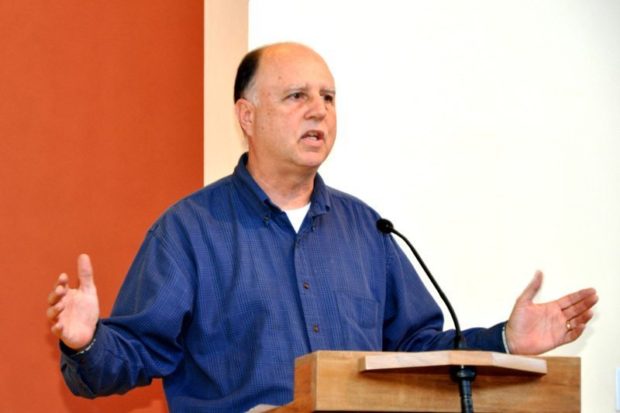

Did you know that while the U.S. newspaper industry has been in a sharp decline in recent years, the same is not true in other countries. According to the Newspaper Industry of America, advertising revenue here has fallen 50% in the last five years. The Internet, digital reading devices and corporate media itself are to blame for the ongoing collapse of the newspaper industry.
Interestingly, in some countries, India for example, the newspaper industry is thriving. There are an estimated 80,000 individual newspapers in India, 85% of which are printed in one of the 22 languages in the country. Newspapers are doing well in India because literacy is increasing and income levels are not yet high enough for a significant number of people to own digital reading devices.
This is interesting to me because one of the Community Alliance’s most significant reading bases are people who pick up this paper for free in downtown and other less affluent areas of Fresno. These are people who get their news from newspapers, not Facebook and their iPhone. The challenge for us is that poor people all too often don’t have the resources to subscribe.
How do they resolve that problem in India? They sell advertising. Yes, they sell the traditional display ads, but they also have many articles written by public relations firms that promote products for corporations. These stories are hard to identify because they don’t look like traditional ads. They are stories that look like news articles but are really ads written by PR firms working for corporations. You can see a version of that in our very own Fresno Bee, which runs a “Sunday Advertising Section” where the articles look like news stories, but they’re really cleverly designed ads bought and paid for by local businesses.
In my opinion, such advertising sections in the Bee cross a line that should have never been crossed. Some newspapers in India, however, go even further. They print rate cards that offer two weeks of positive political coverage for a candidate for $40,000. Ten days of good coverage costs you $30,000 and if you want negative stories about your opponent, that is extra. If you pay them nothing, they ignore you. When I have told this amazing story to friends over the last couple of days, they respond with some version of “yeah, but that happens here too.” The corporate media might not print rate cards with the prices for candidate coverage listed, but well-financed candidates with big advertising budgets get a lot more media exposure than those who don’t buy ads.
Where does that leave publications like the Community Alliance? Obviously, we are not for sale, but we do have to survive in order to get you the news you have come to expect. That is why it is so important that we have people who subscribe, donate and advertise with us. The broader the base of our support, the more independent we can be.
The result of our recent fund appeal was just amazing; because of our readers’ generosity, we are again financially viable and we will continue providing you with the news and information needed to build a progressive movement. When supporters realized it was possible that we might not survive, they told me they could not imagine Fresno without this paper and followed through with contributions (many of them $1,000 or more) to ensure that there was a voice speaking out for peace, social and economic justice. That is how the Community Alliance will survive—by counting on our friends and supporters, not selling our journalistic integrity to the highest bidder.
Free Speech at Fresno City College
Last month, I reported that our newsstands had been removed, without notice, from Fresno City College (FCC). We now know that they were removed by staff at FCC in preparation for the installation of new ad kiosks. The Facilities Committee was supposed to notify publications that this was happening, but we were never notified. In fact, they were supposed to only remove unapproved newsstands. That is why the Fresno Bee stands remain in place. As we go to press, the authorities at FCC have still not released and returned our newsstands even though we have shown them the authorization we received to place newsstands on campus in March 2006.
Helping the Homeless
Many of our readers are not aware that about two years ago, this newspaper started a project to help the homeless live with a little more dignity and respect. We started by providing a single trash bin at the Santa Clara and E streets homeless encampment. In March 2011, we added portable toilets on F Street (near Santa Clara). This was paid for by donations given to me during “Reality Tours” of the encampments given to faith groups, students and community members.
The project was only able to sustain itself on a month-to-month basis. Although we have encouraged faith-based groups to fund the project, no long-term funding has emerged. I suspect that my friends and contacts in the homeless advocate community were getting tired of my constantly asking them for money and I was just about to give up on the viability of the project. It was at that time when we were contacted by the Fresno Regional Foundation about a possible grant. It was then that I started to believe this project would be sustainable for a longer period of time.
It was such a welcome and pleasant surprise when we were told that there was an anonymous donor who would pay for a year’s worth of services. If this development had not happened, it is unlikely that we would have been able to continue for more than another month or two.
Because of unexpected events, such as the destruction of all the homeless encampments in October and November of 2011 by the City of Fresno, and the additional donations we have received, we have been able to make the grant from the Fresno Regional Foundation stretch beyond the one year goal.
The city’s demolition of the homeless encampments late last year resulted in our pulling out all of the trash bins and portable toilets for a couple of months. We did this because there was a period of time when the city would not let homeless people settle in any one area. When the dust settled and homeless encampments reemerged, we started renting portable toilets again, eventually placing five units in three different encampments. We currently have two portable toilets at the Monterey and E streets encampment, one at H and San Benito streets, and two on Santa Clara Street, between F and E streets.
The portable toilets get a lot of use and, frankly, we should have more in place to accommodate the number of people using the facilities. We have each of the portable toilets cleaned out two times a week. I think if we doubled the units we might have enough to meet the needs of the people living in those three encampments.
One of our biggest challenges was providing people at the encampments with enough toilet paper (TP). What we learned was that if they do not have enough TP, they will tear up and use clothing, which is plentiful. Unfortunately, clothing clogs up the plumbing and the units can’t be cleaned. It has taken a significant effort to provide a steady stream of TP to the encampments.
Earlier this year, the City of Fresno delivered large dumpsters to four of the largest homeless encampments (the three downtown and one near H and Palm streets). That worked pretty well and saved us some money while they were in place. There were some problems with illegal dumping by contractors and yard services. City Hall, rather than enforcing the law against illegal dumping, decided to remove the dumpsters a couple of months ago.
In October, we hired a contractor to clean all of the garbage that had accumulated at the three downtown encampments. Without dumpsters or regular cleanups, the garbage will accumulate attracting flies and rodents and become a health hazard.
Every dollar we have received has gone for direct services to help the homeless. We have not used any money for administrative or other expenses. We would like to continue providing the homeless with portable toilets and reestablish trash bins in all of the encampments, but we do not have the resources to pay for this project. Unless we can get donations (from readers like you) or additional funding through a foundation, we will use up the money we have in the next month and be forced to shut down the project.
